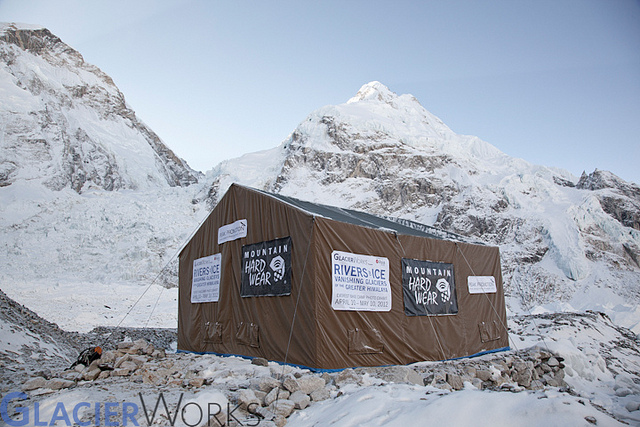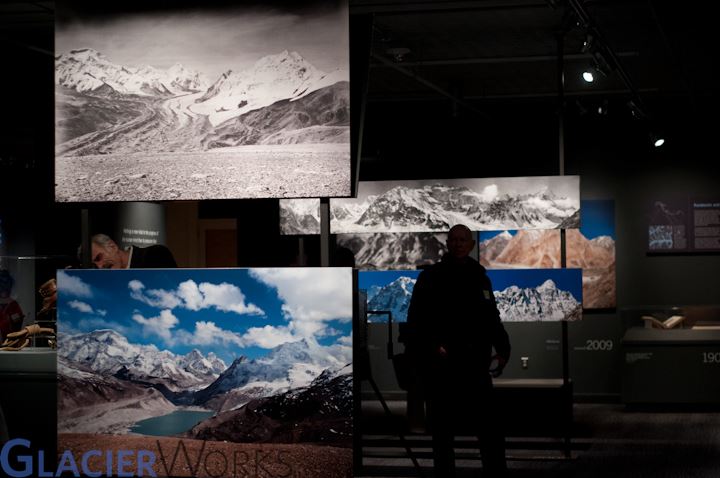Art historical research became more scientific with the accessibility of photography, documenting specific features of work and facilitating visual archiving along with the written word. Storing these elements together provides researches with a more complete vision of the narrative overtime.
Camera Precision: How ARTMYN Leverages Digitization for Engagement
Cataloging is one of the most labor intensive responsibilities for collections management, requiring the expertise of many art-specialists. It typically is also the most encountered feature of a collection, especially when the actual object is restricted with respect to: preservation, accessibility, and engagement. Digitizing collections challenges traditional paradigms for audience interaction, and one private organization leading the progression is ARTMYN.
Looking at the Land: The Crowdsourced, Digital Exhibition from Flak Photo’s Andy Adams
He needs no introduction, but for new visitors to our site it is my pleasure to welcome back Andy Adams to Technology in the Arts.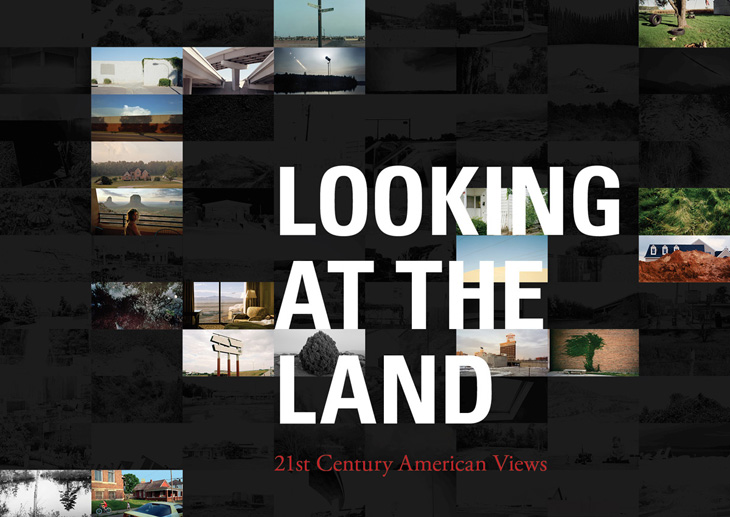 You may remember our conversation with Andy in May when we discussed the concept of Photo 2.0 and the role of Web 2.0 technologies in redefining the field of photography.
You may remember our conversation with Andy in May when we discussed the concept of Photo 2.0 and the role of Web 2.0 technologies in redefining the field of photography.
Andy’s newest success, “Looking at the Land: 21st Century American Views,” is a digital exhibition of 21st Century American Landscape photography. The exhibition, prepared in collaboration with the Museum of Art, Rhode Island School of Design, is a discussion (both in photographs and in interviews) with eighty-eight photographers on the practice and meaning of landscape photo-making in the 21st Century. On the website, Andy discusses the current status of the exhibition, including the presentation of twenty of the photographs in physical form at the FotoWeek DC 2012 festival.
Andy and I again had the chance to discuss the themes of photography and online-presenting, but this time focused on the process of organizing a digital exhibition, his experience with crowdsourcing creativity, and his thoughts on the effects of digital projection on viewing. While my full interview with Andy will be posted here on Technology in the Arts soon, I encourage you to view the online exhibition beforehand (available for viewing below).
[embed]http://vimeo.com/49855891[/embed]
Check back in next two weeks for more of Andy’s insight on the future of photography, digital exhibitions, and crowdsourcing creativity.
Rivers of Ice: Exhibitions at MIT Museum and Everest Base Camp
An exhibition at the Mount Everest Base Camp is no ordinary undertaking. The location itself is bound to generate a few shudders. But for an organization named GlacierWorks, no glacier is too remote a location to increase awareness about the potential impact of glacial loss on Asia’s water supply. Incidentally, for those far from the Himalayas but close to Massachusetts, their work is also being exhibited at the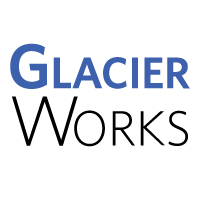 MIT Museum.
GlacierWorks is an organization we have written about in the past because of their unique use of “art, science, and adventure” to document changes in the Himalayan glaciers. Through a process of matched photography, using images by 20th century photographers such as Vittorio Sella and Sir George Mallory, they are able to note the decrease in glacial mass that has taken place during the course of the century. The results are presented in compelling photographic exhibitions that narrate a story of loss in the highest reaches of the Himalayas.
MIT Museum.
GlacierWorks is an organization we have written about in the past because of their unique use of “art, science, and adventure” to document changes in the Himalayan glaciers. Through a process of matched photography, using images by 20th century photographers such as Vittorio Sella and Sir George Mallory, they are able to note the decrease in glacial mass that has taken place during the course of the century. The results are presented in compelling photographic exhibitions that narrate a story of loss in the highest reaches of the Himalayas.
For an exhibition titled, Rivers of Ice: Vanishing Glaciers of the Greater Himalaya, the Everest Base Camp couldn’t be a more appropriate or beautiful location. “Set against the magnificent backdrop of Mount Everest and the Khumbu glacier, Rivers of Ice presents visitors with a chance to admire the vast beauty of the High Himalaya while reflecting upon the profound changes taking place in this seemingly impermeable landscape.”
GlacierWorks stresses how some of the most important rivers in Asia (Indus, Ganges, Yellow, Yangtze etc.) rely on the Himalayan glaciers for “seasonal flow of fresh water”, and any change in that flow can affect millions of people downstream.
“Data collection in this vast and remote region is impossible for all but the most seasoned climbers, and each glacier has unique characteristics that prevent broad generalizations about the region as a whole. Nevertheless, scientists agree that there is a trend of melting beyond what can be expected to occur naturally.”
Since Everest Base Camp is a mountaineering mecca of sorts, Rivers of Ice is sure to affect the daring mountaineers who tread upon the very glaciers exhibited. Yet more importantly, the cause for concern is destined to wind its way down the Himalayas; to India, China, and the international community as a whole. Those with little to no inclination for steep inclines and frosty conditions can keep up with the exhibit via GlacierWorks’ Facebook and Google+ pages. You can also follow the exhibit on their Twitter, where it will be promoted using the hashtag, #icegallery.
If you wish to see their photographs in person but are daunted by the notion of a journey to the base of Mount Everest, you can make a far less taxing visit to the Rivers of Ice exhibit at the MIT Museum. Rivers of Ice seeks to “trigger public dialogue as scientists and policymakers work to better understand the glaciers’ potential impact on the fresh water supply in Asia, and on global environmental issues in general.”
As the MIT Museum explains, the true plight of the Himalayan glaciers has led to a certain degree of controversy in academia. A scientific report earlier this year concluded that the Himalayan glaciers had in effect seen no decrease in ice between 2003 and 2010; the loss of glacial ice had been compensated for by an increase in ice in the caps. Understandably, the behavior of these glaciers confounds climate scientists. Yet they remain a rare, unexplained exception as the study shows that glaciers in Antarctica and Greenland are losing mass at significant rates. Globally, a total of 536 gigatonnes of ice have been lost between 2003 and 2010.
The MIT Museum goes on to say the following:
“As our thinking about Rivers of Ice evolved, we came to realize that the exhibition gives us an ideal platform for opening discussions about climate change, about water resources and, fundamentally, about how science works. Acquiring scientific knowledge is a back-and-forth, trial and error process. As the research continues, we hope for more clarity, but we're prepared for more disagreement about what exactly is happening to the glaciers in the Himalaya.”
GlacierWorks photographs are an excellent opportunity to delve into the conversation about climate change. And even as we wait upon clarity regarding the Himalayan glaciers, the broader trend of glacial loss could not be clearer. It’s easy to forget about climate change when you live under perpetually sunny skies. But a trip to the Himalayan glaciers on GlacierWork’s website or the MIT Museum will definitely give you something to shiver about.
Artistic Inspiration and the Fall of Kodak
A new exhibit in our nation’s capitol is as breathtaking in its quality as it is in its simplicity: seven world renowned artists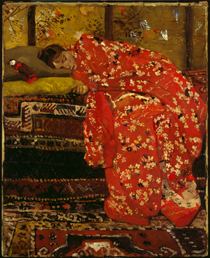 offering up private photographs of their daily lives and sharing them with the world, alongside beautiful works of art. The uniqueness of the exhibit, however, lies in its inspiration.
Kodak, the company loved around the world for its handheld cameras and impact on the lives of artists everywhere, serves as the inspiration for the exhibit, as all of the photographs taken are from simple Kodak handheld cameras. Given recent events, however, the inspiration is bittersweet: having recently declared for bankruptcy, and fear of liquidation rampant, artists everywhere face the reality of a world without the company that inspired so many of them to take their first photograph.
offering up private photographs of their daily lives and sharing them with the world, alongside beautiful works of art. The uniqueness of the exhibit, however, lies in its inspiration.
Kodak, the company loved around the world for its handheld cameras and impact on the lives of artists everywhere, serves as the inspiration for the exhibit, as all of the photographs taken are from simple Kodak handheld cameras. Given recent events, however, the inspiration is bittersweet: having recently declared for bankruptcy, and fear of liquidation rampant, artists everywhere face the reality of a world without the company that inspired so many of them to take their first photograph.
The exhibition, Snapshot: Painters and Photography, Bonnard to Vuillard, opened this past Sunday and continues until May 6th at The Phillips Collection Museum in Washington, D.C. Organized in conjunction with the Indianapolis Museum of Art and the Van Gogh Museum in Amsterdam, the exhibit features the work of seven dynamic artists: Pierre Bonnard, Maurice Denis, Edouard Vuillard, Felix Vallotton, George Hendrick Breitner, Henri Evenepoel and Henri Riviere.
The idea behind the exhibit is simple: taking their cue from the inspiration of the Kodak handheld camera, first introduced in 1888, all seven artists experimented with the simple device and provided images that captured their daily lives and the world around them. All seven artists captured images of beauty and resonance, and all together compiled over 200 photographs for the exhibit. The artists as a team took over 10,000 photographs with their trusty Kodak cameras, and the great thing about the exhibit is that most of the photos are unpublished and never seen before in public. Most of the images were meant to remain private, and instead of keeping them in their personal collections, the artists have decided to share them with the world.
One of the nice things about the exhibit is how some of the photographs in the collection served as inspirations for later paintings. You can see, side by side, the original photographs next to the paintings. The other parts of the exhibit feature over 70 paintings, drawings and prints from the artists.
The larger point here, at least for me, is how this relates to the recent news of Kodak’s bankruptcy. As reported by the New York Times and others, Eastman Kodak filed for bankruptcy last month, with many in the business world predicting that liquidation may be in its future. Founded over 131 years ago, Kodak has struggled to remain competitive in today’s technological environment, with more and more photographers going digital and leaving the company’s tried and true 35mm cameras behind.
Kodak is not the first company to struggle in the face of new technologies, and it certainly will not be the last. But as it relates to the arts and technology as a whole, this case takes on additional meaning. So many artists and photographers first fell in love with cameras and taking photographs because of Kodak and their simple 35mm cameras. In the age when film was king, Kodak had a near monopoly on the 35mm business, with competition from Fuji in recent decades. Kodak’s efforts were responsible for creating millions of artists and some of the images that have resonated with us for decades.
Kodak’s lessened stature may not have been noticed by many over the past ten years, as digital cameras have boomed and consumers have been more concerned with LCD screen size and optical zoom size instead of remembering what kind of film to buy. But for anyone who has ever bought a Kodak handheld and been introduced to the wonderful world of photography, it stings a little bit.
Even as Kodak sought to expand its portfolio over the past decade, knowing that this moment was going to come, it could still count on people seeking that old fashioned thrill of the disposable camera. But as more and more people turned to digital, and the company failed to do well enough in the other fields it has ventured into in recent years, including printers and digital cameras, it was only a matter of time until the company was in danger of folding.
I still remember taking pictures with a Kodak handheld when I was a kid, eagerly joining my mother as we went to the store to develop pictures of our family vacations. When I worked in retail in high school and college, I worked with Kodak vendors who introduced us to their latest 35mm and digital cameras. I had friends who worked for Kodak, both at their main offices in Rochester and as field representatives.
So as it relates to the exhibit in Washington, it’s refreshing to see a new exhibit that seeks to capture the joy of artists taking simple pictures with their trusty Kodak handhelds. Even as technology changes, ultimately for the better, a nod to the photograph’s past is especially appreciated.
The beauty of technology is that current and future generations will find inspiration from the arts in new and exciting ways. Digital cameras are becoming extremely affordable and are allowing more and more people to experience the joy of photography. Online editing tools are allowing people the tools to create beautiful, dynamic images at resolutions as large as their imaginations.
Twenty or thirty years from now, will museum exhibits look back on the era of our current technology, digital cameras, as society leaves them behind for something else? It’s too soon to tell, but we do know one thing: the beauty and joy of photography will continue to entertain and capture the imaginations of people of every age and background. As we move forward in an era of exciting technological breakthroughs and products, it’s a shame that a company like Kodak may not be around to enjoy it.
(Photo: courtesy of the Phillips Collection)
Are you really my friend? The Facebook Portrait Project
I went to elementary school with her- confirm request. He is the son of my mom’s friend from work- confirm request. She’s a friend of a friend 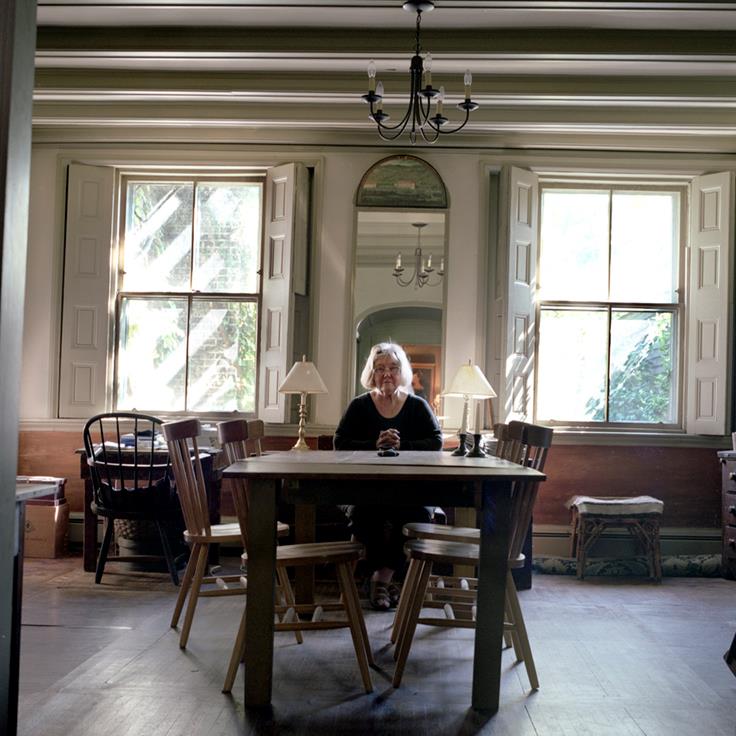 that also likes Amos Lee, Portland, Maine and the Peggy Guggenheim Collection in Venice, but we’ve never actually met- confirm request.
The word “friend” is now synonymous with Facebook and its meaning has been redefined to incorporate relationships formed as loosely as in the situations above. Regardless of how intimate your real world relationships are with your newest virtual “friends,” they receive the same amount of information and become privy to the innermost private details of your life through your Facebook activity, statuses and photos.
that also likes Amos Lee, Portland, Maine and the Peggy Guggenheim Collection in Venice, but we’ve never actually met- confirm request.
The word “friend” is now synonymous with Facebook and its meaning has been redefined to incorporate relationships formed as loosely as in the situations above. Regardless of how intimate your real world relationships are with your newest virtual “friends,” they receive the same amount of information and become privy to the innermost private details of your life through your Facebook activity, statuses and photos.
Yes, you can “poke” others on Facebook, but Maine photographer Tanja Alexia Hollander, has discovered through her own Facebook friendship odyssey that Facebook cannot replace human interactions
Social media has become a fundamental part of our society in the 21st century. Its convenience allows us to instantaneously communicate and share a level of intimacy with those we know well and many we don’t know at all. Despite its presence in our lives today, social networks cannot replicate human interaction. It is arguable, however, that the online environments we’ve created and the resulting reduction of human interaction have an impact on our relationships.
Since the beginning of 2011, Hollander has embarked on a journey to meet (some for the first time) and photograph all 626 of her Facebook friends, traveling across the state, country and world to reach them in their most intimate and private space: their home. Hollander’s photographic and personal journey grew into the project and upcoming exhibit “Are you really my friend? The Facebook portrait project.”
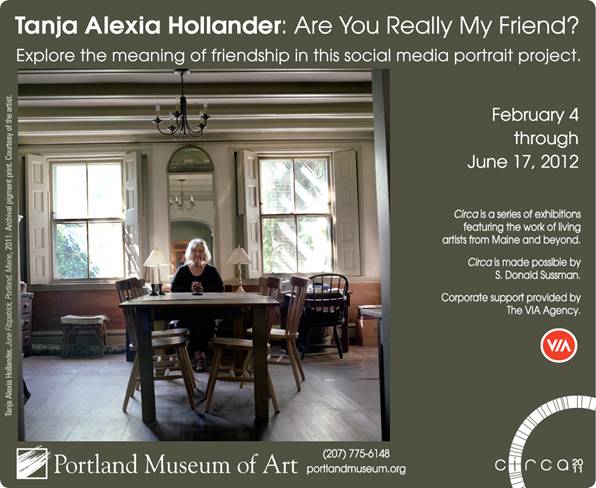 More than just an exploration of virtual social networks and humans’ dual existence in a cyber space and physical, real world space, Hollander’s project and exhibition explores the evolution and modern-day role of formal portraiture, the meaning of home and the future of human interactions and American culture in an increasingly virtual world.
More than just an exploration of virtual social networks and humans’ dual existence in a cyber space and physical, real world space, Hollander’s project and exhibition explores the evolution and modern-day role of formal portraiture, the meaning of home and the future of human interactions and American culture in an increasingly virtual world.
My project is an exploration of friendships, the effects of social networks and the intimate places we call home. Facebook seemed an ideal forum for this exploration. Though we are in the initial stages of understanding the effects of social networking on American culture and photography there is a pervasive feeling that it is changing our interactions with each other and building a false sense of community.
But do not misinterpret Hollander’s project or exhibition- she is neither defaming Facebook nor purging herself of it upon completion of the project. Quite the contrary, actually. As a result of visiting with and photographing each of her friends, Hollander discovered they do in fact pay close attention to her life online and wanted to follow up about what they saw or read. To Hollander, this gave greater merit and value to the relationships she maintains via Facebook and lessened the gap she was questioned between our simultaneous existence in cyber space and the real world.
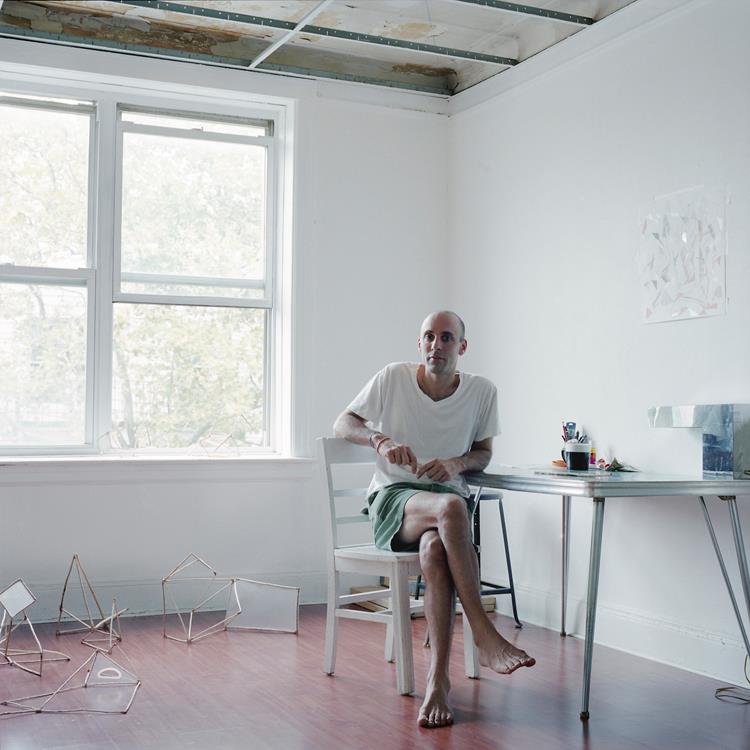 I had the pleasure of speaking with Hollander before the holidays as she approached the final stages of preparing for the exhibition. Since her project has received wide coverage and media attention, I wanted to discuss Hollander’s relationship with social media as co-founder of the self-serving, fine arts photography studio, the Bakery Photographic Collective in Westbrook, Maine. As a manager and artist, Hollander is in the unique position of successfully managing the studio and doing so with a great sensitivity and passion for the arts.
I had the pleasure of speaking with Hollander before the holidays as she approached the final stages of preparing for the exhibition. Since her project has received wide coverage and media attention, I wanted to discuss Hollander’s relationship with social media as co-founder of the self-serving, fine arts photography studio, the Bakery Photographic Collective in Westbrook, Maine. As a manager and artist, Hollander is in the unique position of successfully managing the studio and doing so with a great sensitivity and passion for the arts.
Hollander is admittedly still overwhelmed by the possibilities, perks and opportunities of blogging and social media, though she now considers herself a Facebook expert (and if you have been following Hollander, the project's Facebook page and photographs, you would most definitely agree).
I asked Hollander specifically about the use of Facebook as both an artist and co-manager of the Bakery Photographic Collective
Now I’m obsessed with it. I’m learning as I go. It has been a process of realization of the perks Facebook offers. It has created an audience. Facebook is really important for an artist promoting their own work. In this down economy, artists can’t rely on galleries for sales- that model is shifting.
Hollander plans to turn her Facebook love loose on the Bakery Photographic Collective’s page once preparations for her February exhibit are complete. For Hollander, Facebook has helped her maintain 626 “friendships,” locate each person geographically and most impressively, create a virtual exhibit to complement her real world exhibit at the museum, as each of her photographed friends were asked to upload their portrait as their Profile Picture.
What started out as a personal documentary on friendship and environmental portraiture has turned into an exploration of American culture, relationships, generosity & compassion, family structure, community building, storytelling, meal sharing, our relationship to technology & travel in the 21st century, social networking, memory, and the history of the portrait.
The possibilities of Web 2.0 for artists as creators and managers promoting their work are endless- Hollander says
I am able to post work as I make it, have a dialogue with a global audience, and market - in one location.
Hollander's exhibit opens February 4th at the Portland Museum of Art in Maine.
(Photo Credit: Tanja Alexia Hollander)










